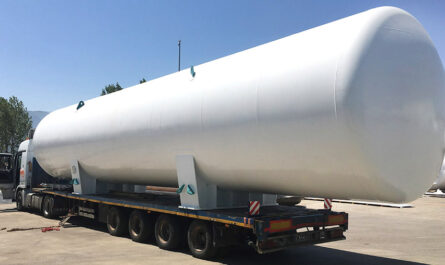The Oil and Gas industry is facing challenges due to declining production from conventional reservoirs, rising operating costs and environmental regulations. However, advancements in digital technologies are transforming operations and streamlining processes in the upstream sector. Introduction of real-time data collection, analysis and risk-based decision making enabled by digital solutions is driving the emergence of ‘Digital Oilfields’.
Sensors installed across oil rigs, pipelines and other field assets now continuously feed vast amounts of data on parameters like pressure, temperature, flow rates etc to centralized command centers. Advanced analytics is then applied to gain insights and predict equipment failures or production anomalies pre-emptively. This moves operations from being reactive to proactive.
Benefits of Digital Transformation
Digital technologies are helping oil and gas companies significantly improve production efficiency, lower costs and reduce risks. Real-time monitoring helps detect and resolve issues faster without having to send personnel on-site. Predictive maintenance techniques based on pattern recognition algorithms analyse equipment behaviour and schedule maintenance during optimal time windows to avoid unplanned downtime.
Digital Oilfield solutions also aid in optimizing well and reservoir management. Remote and autonomous operations minimize the need for onsite human intervention. Intelligent drilling systems navigate wellbores with higher degree of accuracy while remote operated vehicles (ROVs) and drones inspect assets in hazardous locations safely. Simulated reservoir models built using supercomputing help extract more oil by precisely placing new wells.
Digital transformation supports environmental and safety goals as well. Remote-controlled rigs and automation reduces manpower requirements on offshore platforms. Digital twin technologies create virtual replicas of physical infrastructure to run “what-if” simulations for spill response planning and containment. Edge analytics and connected sensor networks provide real-time leak detection helping plug losses faster.
Barriers to Overcome
While the benefits of digital oilfields are immense, full-scale adoption still faces certain challenges. Integrating legacy analogue systems with new digital infrastructure requires substantial upfront investments. Lack of common connectivity standards complicates data integration across diverse ‘smart’ equipment. Ensuring cyber security of Internet-connected field devices against threats like ransomware is another concern.
Skills gaps due to attrition of experienced petrotechnical staff and shortage of data science talent also hampers digital transformation efforts. Complex contractual, operational and cultural barriers between competitors collaborating on shared infrastructure projects introduces delays. Regulatory restrictions on the use of autonomous systems and lack of clear guidelines for allocating liabilities further slow wider deployment.
Way Forward
To realize the complete transformational potential, stakeholders must work towards overcoming these barriers. Partnerships between operators, technology providers, educational institutes and public agencies can help bridge competency shortfalls. Investing in secure and open digital platforms that support plug-and-play integration of heterogeneous systems will spur faster adoption.
Delineating responsibilities through operational governance frameworks assuages regulatory apprehensions around safety of autonomous equipment. Deploying technologies in phased manner starting from brownfield applications helps validate ROI before aggressive capex outlays. Collaborative R&D consortia can jointly develop interoperable standards and specifications to accelerate innovation across the ecosystem.
With oil demand projected to continue rising in coming decades, digitalization will be key for the industry to sustain production levels economically and with reduced carbon footprint. Early adopters that successfully navigate the above challenges stand to reap maximum benefits through optimised operations, reduced finding and extraction costs and strongest financial resilience to face future commodity price volatility. The digital transformation of oilfields is well and truly underway.
Note:
1. Source: Coherent Market Insights, Public sources, Desk research
2. We have leveraged AI tools to mine information and compile it



